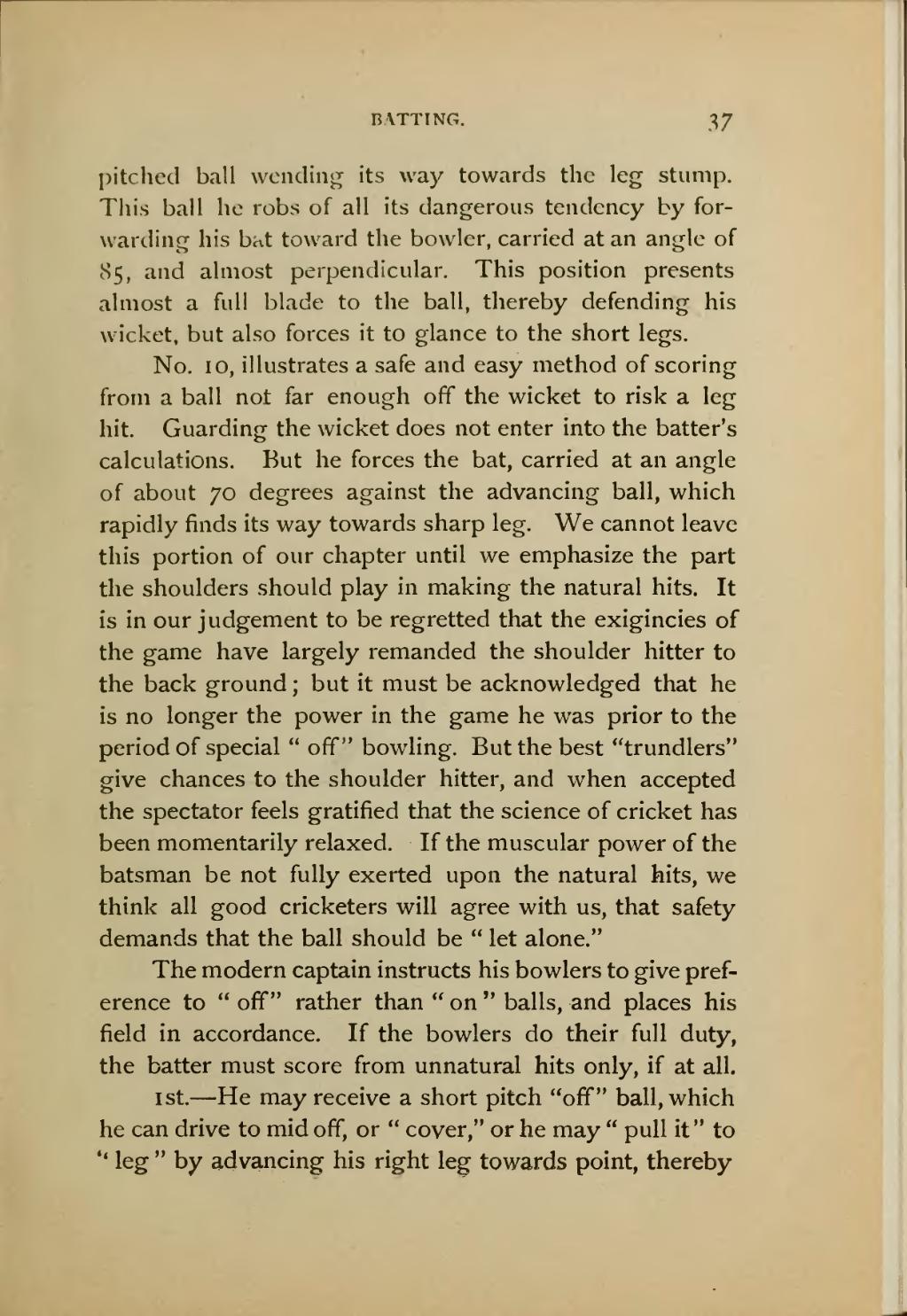pitched ball wending its way towards the leg stump. This ball he robs of all its dangerous tendency by forwarding his bat toward the bowler, carried at an angle of 85, and almost perpendicular. This position presents almost a full blade to the ball, thereby defending his wicket, but also forces it to glance to the short legs.
No. 10, illustrates a safe and easy method of scoring from a ball not far enough off the wicket to risk a leg hit. Guarding the wicket does not enter into the batter's calculations. But he forces the bat, carried at an angle of about 70 degrees against the advancing ball, which rapidly finds its way towards sharp leg. We cannot leave this portion of our chapter until we emphasize the part the shoulders should play in making the natural hits. It is in our judgement to be regretted that the exigincies of the game have largely remanded the shoulder hitter to the back ground; but it must be acknowledged that he is no longer the power in the game he was prior to the period of special "off" bowling. But the best "trundlers" give chances to the shoulder hitter, and when accepted the spectator feels gratified that the science of cricket has been momentarily relaxed. If the muscular power of the batsman be not fully exerted upon the natural hits, we think all good cricketers will agree with us, that safety demands that the ball should be "let alone."
The modern captain instructs his bowlers to give preference to "off" rather than "on" balls, and places his field in accordance. If the bowlers do their full duty, the batter must score from unnatural hits only, if at all.
1st.—He may receive a short pitch "off" ball, which he can drive to mid off, or "cover," or he may "pull it" to "leg" by advancing his right leg towards point, thereby

